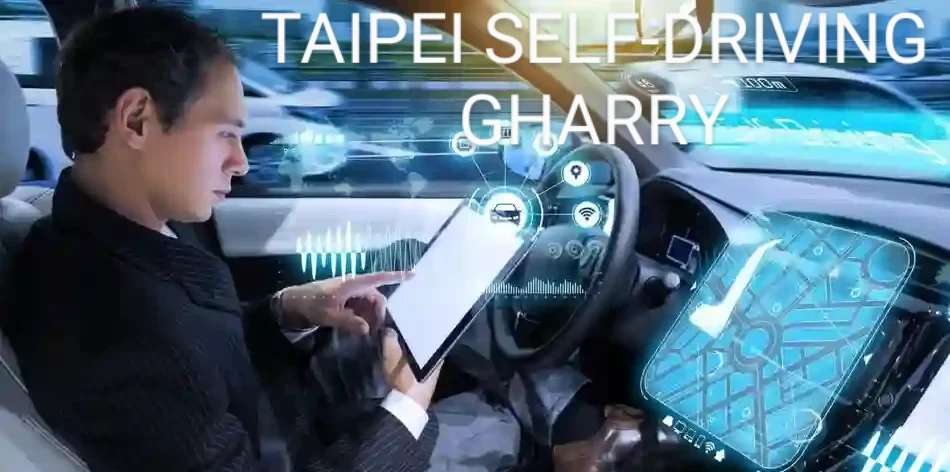In the realm of technological innovation, Taipei has been a forerunner, particularly in the domain of autonomous transportation. The introduction of the Taipei Self-Driving Gharry stands as a testament to this. This blog post delves deep into the nuances of this groundbreaking technology, exploring its implications not just for Taiwan but for the future of global transportation.
Table of Contents
The term “Self-Driving Gharry” might evoke images of futuristic vehicles, and rightly so. These autonomous vehicles represent the pinnacle of modern engineering and artificial intelligence. As we explore this topic, we will uncover the layers of technology, innovation, and vision that make the Taipei Self-Driving Gharry a topic of global interest and a beacon of the future of transportation.
The Emergence in Taipei Self-Driving Gharry
Taiwan has been a hub of technological innovation, especially in electronics and computing. This expertise has naturally extended into the realm of autonomous vehicles. The evolution of Taipei Self-Driving Gharry technology globally has seen significant contributions from Taiwanese researchers and companies, positioning the nation as a key player in this revolutionary field.
Development of the Self-Driving Gharry
The concept of the Taipei Self-Driving Gharry in Taiwan is a unique blend of traditional design and cutting-edge technology. The term “gharry,” historically referring to horse-drawn carriages, is reimagined here to signify a blend of cultural heritage with futuristic innovation. This project is not just about creating a Taipei Self-Driving Gharry vehicle; it’s about redefining transportation in a way that resonates with Taiwan’s cultural and technological identity.
What is a Self-Driving Gharry?
A Taipei Self-Driving Gharry is essentially an autonomous vehicle designed to operate without human intervention. Using a combination of sensors, cameras, AI algorithms, and GPS technology, these vehicles can navigate through Taiwan’s diverse urban and rural landscapes. The design is a nod to the traditional gharry, but under the hood, it’s a completely modern, technologically advanced vehicle.
The Cultural and Modern Fusion
This initiative is not just a technological leap but also a cultural one. By choosing the term “gharry,” Taiwan connects its rich cultural past with its progressive future, symbolizing a journey that respects traditions while embracing modernity. This fusion is a significant step in making technology more approachable and rooted in Taiwanese culture.
The Technology Behind the Self-Driving Gharry
The Self-Driving Gharry is equipped with a sophisticated array of technologies:
- Sensors and Cameras: These are the eyes of the vehicle, providing real-time data on its surroundings.
- Artificial Intelligence (AI): AI algorithms process the data from sensors to make split-second decisions.
- Global Positioning System (GPS): GPS technology ensures accurate navigation and route planning.
- Machine Learning: Enables the Gharry to learn from experiences and improve over time.
Integration with Taiwan’s Tech Industry
Taiwan’s renowned semiconductor and electronics sectors play a critical role in developing and supplying the components necessary for these self-driving systems. The collaboration between the automotive and tech industries in Taiwan is pivotal in advancing these autonomous vehicles.
Benefits of Taipei Self-Driving Gharry
- Reduced Human Error: A significant number of accidents are caused by human error. Autonomous vehicles, with their precision and consistency, aim to drastically reduce such incidents.
- Advanced Accident Avoidance Systems: Equipped with systems to detect and avoid potential hazards, these vehicles promise a safer driving environment.
Environmental and Urban Impact
- Lower Emissions: Electric-powered self-driving vehicles contribute to reduced carbon emissions.
- Efficient Traffic Management: With smarter navigation and driving patterns, these vehicles can alleviate traffic congestion.
Economic and Social Benefits
- Boost to the Economy: Development of autonomous vehicles can propel technological innovation and job creation.
- Accessibility: Self-driving vehicles can provide mobility solutions for the elderly and disabled, enhancing social inclusion.
Challenges and Limitations
- Complex Technology: Developing fail-safe autonomous technology is a complex task, requiring rigorous testing and refinement.
- Infrastructure Compatibility: Existing road infrastructure may need upgrades to support autonomous vehicles fully.
Legal and Ethical Considerations
- Regulatory Frameworks: Establishing laws and regulations for self-driving vehicles is a new territory for lawmakers.
- Ethical Dilemmas: Decision-making in unpredictable traffic scenarios presents ethical challenges for AI programming.
Public Perception and Acceptance
- Trust in Technology: Gaining public trust in fully autonomous vehicles is crucial for widespread adoption.
- Transition Phase: Managing the coexistence of traditional and self-driving vehicles on the roads poses its own set of challenges.
Case Studies: Self-Driving Gharries in Action
Taipei Self-Driving Gharry project has moved from theoretical design to real-world application. Here are some notable instances SWGOH Web Store:
- Urban Testing: Trials in city environments to assess navigation in dense traffic and complex urban landscapes.
- Rural and Scenic Routes: Demonstrations in rural areas showcase the versatility and adaptability of the technology in varying terrains.
Comparative Analysis with Global Initiatives
When compared to global counterparts, Taiwan’s Self-Driving Gharry stands out for its integration of cultural elements and advanced technology. This approach offers insights into how autonomous vehicles can be tailored to fit the unique cultural and environmental contexts of different regions.
Next Steps for TTaipei Self-Driving Technology
The future of Taipei Self-Driving Gharry is bright and full of potential:
- Technological Advancements: Continued innovation in AI and machine learning to enhance decision-making and safety.
- Expansion of Testing and Applications: Broadening the scope of testing to include more diverse environments and use cases.
Global Impact and Leadership
Taiwan’s pioneering work in this field positions it as a leader in the global autonomous vehicle industry. The nation’s approach offers a blueprint for others, showcasing how technological advancements can be harmoniously blended with cultural heritage.
How Taipei Self-Driving Gharries Impact the Global Scene
Taiwan’s innovations contribute significantly to the global market, particularly in areas like AI, sensor technology, and the integration of cultural aspects into technological design.
Collaborations and Partnerships
Taipei Self-Driving Gharry foray into autonomous vehicles has fostered international collaborations, bringing together tech giants, automotive leaders, and research institutions from around the world. These partnerships are not only technological exchanges but also cultural and intellectual collaborations.
Conclusion
The exploration of Taipei self-driving gharry technology is a fascinating glimpse into the future of urban transportation. It signifies more than just technological advancement; it represents a harmonious blend of tradition with modernity, showcasing Taipei’s commitment to innovation while respecting its rich cultural heritage. As Taipei continues to develop and refine these autonomous vehicles, it sets a precedent for cities worldwide, demonstrating the potential of smart technology to revolutionize urban mobility.
This journey into Taipei’s self-driving gharry initiative highlights the city’s role as a frontrunner in technological advancement. It’s a testament to the possibilities that open up when cultural nuances are seamlessly integrated with cutting-edge technology. The self-driving gharry is not just a mode of transport; it’s a symbol of Taipei’s vision for a smarter, safer, and more sustainable future. As the world watches Taipei’s strides in this field, the city emerges not just as a technology hub but as a beacon of innovation that respects and preserves its cultural identity. The self-driving gharry, thus, is more than a vehicle; it’s a bridge towards a future where technology and tradition coexist in harmony.
FAQs
- What sets Taiwan’s Self-Driving Gharry apart from other autonomous vehicles?
- The integration of Taiwan’s cultural heritage with cutting-edge autonomous vehicle technology is a distinctive aspect of the Self-Driving Gharry.
- How safe are Taiwan’s Self-Driving Gharries?
- With advanced AI, sensors, and rigorous testing, these vehicles are designed to offer a high safety standard, though ongoing development and testing continue to enhance their safety features.
- When can we expect widespread use of Self-Driving Gharries in Taiwan?
- Widespread adoption is dependent on ongoing testing, technological advancements, and regulatory frameworks, which are currently in progress.







